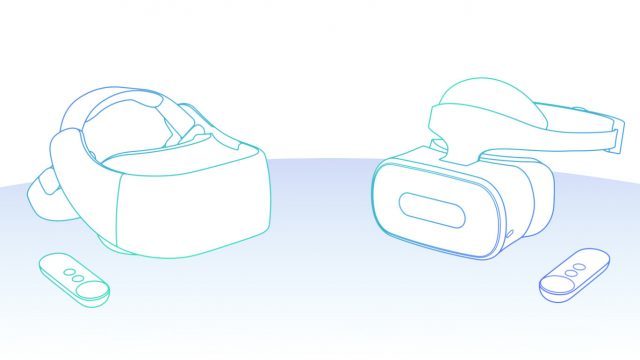Google today announced that standalone VR headsets are coming to Daydream, the first of which will be made by HTC and Lenovo. Supporting these new devices is an inside-out positional tracking system that the company is calling ‘WorldSense’, which “dramatically” improves tracking over previous Daydream devices.
WorldSense is a positional tracking system from Google that’s ‘inside-out’; that means it doesn’t need any external sensors or beacons to track the movement of your head through 3D space. The new fully self-contained ‘standalone’ VR headsets for the Daydream platform will use the new tech to allow for positional tracking which Google says “dramatically” improves the experience compared to prior Daydream devices (and we agree, good positional tracking is a huge benefit to immersion and comfort in VR).
 Those prior Daydream devices, which relied on typical smartphones, can only track the rotation of your head. Positional tracking allows the system to detect the movement of your head through space, like forward, backward, up and down motions. Rotational and positional tracking together are also often called ‘6 Degrees of Freedom’ or ‘6DOF’.
Those prior Daydream devices, which relied on typical smartphones, can only track the rotation of your head. Positional tracking allows the system to detect the movement of your head through space, like forward, backward, up and down motions. Rotational and positional tracking together are also often called ‘6 Degrees of Freedom’ or ‘6DOF’.
Positional tracking has long been a feature of high-end PC headsets like the Rift and Vive, but bringing the tech to mobile VR headsets in a practical way has been remained challenging.
The leading VR companies have been focusing on computer-vision as a means to achieve inside-out positional tracking. Such systems rely primarily on cameras on the device to see the real world, and then use algorithms to infer movement of the head from the moving image of the world. Data from other sensors like accelerometers and gyroscopes are also fused into the equation to make tracking more precise.
Google is calling their approach WorldSense, and although we haven’t seen it in action just yet, a short explanatory animation suggests that it not only allows for inside-out positional tracking, but also maps the environment around the user. You can see in the animation that the objects on the table are detected as individual pieces of geometry, and their volume is updated in real-time as the perspective moves.
With a name like WorldSense, Google seems to be implying that the tracking system will be able to work at a huge scale, without pre-scanning or calibration. We expect to get a lot more detail on the tech this week at I/O 2017 so stay tuned.






